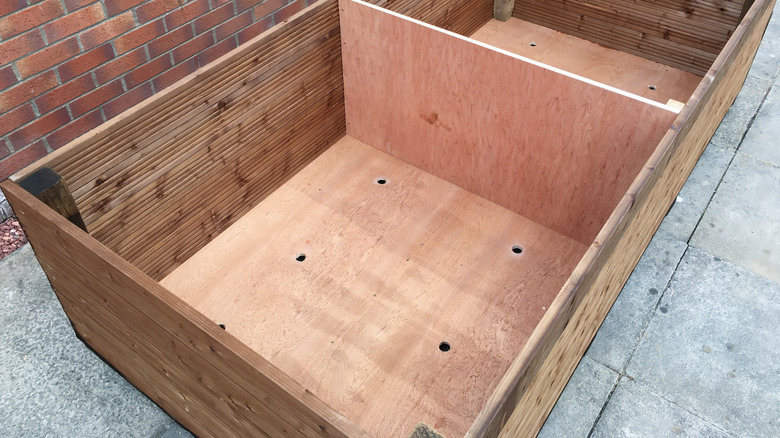Why You Should Treat DIY Wood Planter Boxes Before Growing Anything (& How To Do It)
Using DIY wood planter boxes is a simple, cost-effective, and environmentally responsible method of growing plants. Recycling wood from crates or pallets to make plant boxes reduces waste, is cheaper than buying pre-made, and size and design can be tailored to fit the needs and space requirements where it will be used. However, it is important to remember that wood exposed to soil and moisture will deteriorate rapidly. This means it is crucial to treat do-it-yourself wood planter boxes before planting anything to maintain durability and prevent rotting.
Treating wood protects it from fungus, water damage, and rapid decay, but some wood treatments use chemicals that may be harmful to plants. In a process called leaching, chemicals used to treat the wood can be released into the soil or water from exposure to the elements. Once contaminated, these chemicals can pose a hazard not just to the plants but to the environment and humans as well. This is why alternative, natural methods like jojoba oil and beeswax are better and safer for treating wood.
Beeswax is an ideal, all-natural wood treatment because it provides a protective coating keeping moisture off the surface and shielding the wood from damage and stains. It's also effective at repelling water and dirt. Jojoba oil, often called a liquid wax, is made from the seeds of the jojoba plant, and has a wax-like substance with unique properties that make it ideal for treating and preserving wood. These two organic components can be combined to create a fantastic wood finish or treatment, that is easy to prepare and apply.
Making a natural and effective wood treatment
The ingredients for an all-natural wood treatment are minimal — requiring only beeswax, which comes in pellet or block form, and jojoba oil, preferably the liquid variant. You'll want a 1,000-ml (34-ounce) container with a lid to store once complete. You'll also need a slow cooker, crock pot, or double boiler to melt the beeswax, a wooden spoon, and a paintbrush or soft cloth.
Prepare the beeswax, which, if using in block form, should be cut into smaller pieces for a better melt. In pellet form, pour enough pellets to fill 250 ml (8.5 ounces) of the container. Next, pour the beeswax from the container to the slow cooker or whatever appliance is used, set it on low heat to melt the wax, and stir until fully melted. Once the beeswax has liquified, use the container to measure and pour 750 ml (25 ounces) of jojoba oil and slowly mix it with the melted beeswax, carefully stirring to blend completely.
After combining the mixture, return it to the container, cool completely, and cover with the lid until used. The compound is now ready to be used either as a liquid oil or in wax form on the wood planters. To apply, use a paintbrush or soft cloth, spreading liberally on all exposed parts of the wood planter to ensure maximum protection. Allow the compound to fully dry before adding soil and plants. In addition to the wood treatment, you may want to include other essential steps for protecting a planter box from water, like lining it with plastic to prevent deterioration.

